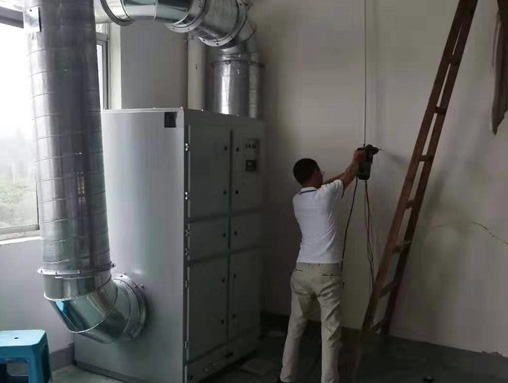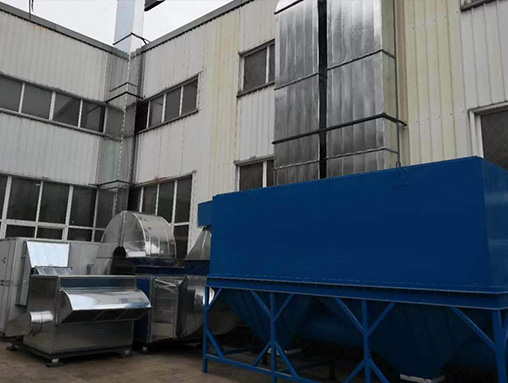Exploration of Wrinkle Problems in Automotive Stamping Parts
1 Preface
Wrinkle is a local accumulation of sheet metal caused by the rapid or poor flow of the sheet metal during the drawing process, which prevents the release of stress. Automotive metal stamping parts; Wrinkle defects not only affect the appearance of the parts, but also have varying degrees of impact on welding and assembly, leading to a decrease in the quality of the vehicle body. In addition, wrinkling problems themselves can reduce the service life of the mold. Therefore, it is necessary to prevent and strictly control the occurrence of wrinkling stacking problems. The main factors affecting wrinkling are as follows:
2. Rationality of Drawstring Design
In the production process of stamped parts, the use of drawing ribs increases the feeding resistance, enhances the degree of plastic deformation of the material, and increases the stiffness of the drawn parts; Adjust the distribution of feeding resistance on each part of the pressing surface, so that the feeding resistance of the straight and rounded curve parts on the outer contour of the drawn part is uniform, and the material flow is uniform; Increase radial tensile stress, reduce tangential compressive stress, and prevent wrinkling of the material surface; Reducing the requirement for the accuracy of the pressing surface, improving the stability of the drawing, and placing appropriate stretching ribs in areas prone to wrinkling can expand the pressing range and reduce the impact of pressure fluctuations.
The mechanism of wrinkling: Improper design and processing of stretching ribs can result in insufficient feeding resistance of the drawn sheet material, excessive flow speed of the sheet material, and local accumulation of sheet material, leading to wrinkling.
By adjusting the position, quantity, and shape of the stretching ribs, the flow speed of the sheet metal can be controlled to solve the wrinkling problem of the workpiece.
3 mold gaps
The mechanism of wrinkling: Uneven gaps between the molds, during the forming process, the parts of the upper and lower molds with small gaps are subjected to greater extrusion pressure on the sheet metal, while the parts with large gaps are subjected to less extrusion pressure. The sheet metal gathers in the mold cavity at the parts with large gaps, resulting in wrinkling. During the debugging phase of a new rear door panel of a certain car model, slight wrinkling occurred in some areas. By brushing blue oil to check the mold fitting rate at that location, it was found that the fitting rate was low. Through online mold fitting, the fitting rate was increased to over 90%, and wrinkling occurred at that location.
By increasing the bonding rate of the mold and improving the uniformity of the mold gap, wrinkling can be avoided or reduced to a certain extent.
4. Edge pressure
The mechanism of wrinkling: The edge pressure is small, which makes it difficult to compact the sheet metal. During the forming process, the sheet metal flows quickly, causing wrinkling problems.
During the drawing process of a new fender of a certain car model, the lower right corner wrinkled. The analysis shows that the reason is that the edge pressure is small, which cannot compact the sheet metal, and the sheet metal flow speed is fast, resulting in insufficient drawing. During the debugging process, the thickness of the shim corresponding to the wrinkling position of the balance block was reduced, resulting in a reduction of two 0.2mm shims and wrinkling issues.
According to the actual situation, this wrinkling phenomenon can be addressed by adjusting the thickness of the balance block gasket or directly increasing the top cylinder pressure;
5 sheet size
The mechanism of wrinkling: metal stamping parts; The size of the sheet metal is too small, and the compression area of the workpiece during the drawing process is too small. The friction between the workpiece and the mold surface is small, which cannot press the material tightly, causing the sheet metal to flow and also forming wrinkles. Usually, there is a 5mm wide thickness outside the stretching rib.
6 Component Structure
The mechanism of wrinkling: There is an accumulation area in the structure of the workpiece, and during the formation process, the sheet metal flows towards the accumulation area. The accumulation area cannot release stress, causing wrinkling and stacking of the sheet metal. There are usually two solutions:
Add a process gap
The side panel of a certain car model has wrinkles at the edge of the flange, which are caused by shrinkage. The curvature of both sides of the panel moves towards the middle, resulting in a multi material area. The general solution to this problem is to create a process gap at the wrinkle, cut off excess material, and solve the wrinkling problem.
b. Absorbent reinforcement
This method is often used in multi material areas where it is not advisable to add process gaps to the parts. The inner panel of the rear side panel of a certain car model is wrinkled during stretching, and there is no space to release the excess material generated during the forming process of the wrinkled area, resulting in the aggregation of the sheet metal and the formation of wrinkles. The commonly used rectification method for this type of problem is to add suction ribs in the multi material area and make the excess material into ribs with different shapes, which solves the wrinkling problem.
7 Process Layout
The mechanism of wrinkling: The arrangement of the forming process of the workpiece affects the flow trend of the sheet metal. If the arrangement is unreasonable and the sheet metal flow is not smooth, it will cause wrinkling risk. The left and right parts of the taillight mounting plate on the back door of a certain car model are symmetrical, and the design process is symmetrical drawing of the left and right parts. This process layout has been analyzed by SE forming, and a wrinkled area appears at the corner of the part. The reason for this is that the material flow trend of the part is to gather from all sides to the middle, causing serious material accumulation at the corner of the part, resulting in wrinkling. It is necessary to make changes to the process structure to alter the direction of material feeding, causing the sheet metal at the corners of the parts to spread outward. SE analysis should be conducted on the modified process layout to address wrinkling issues.
The wrinkling phenomenon of automotive stamping parts accounts for a large proportion of stamping quality defects. The factors that cause wrinkling mainly include the rationality of drawing bead design, mold clearance, edge pressure, sheet size, part structure, and process layout. There are many methods to solve wrinkling problems. When process personnel encounter wrinkling problems, they need to investigate the root cause of the wrinkling problem through the location of the wrinkling, the flow of the sheet metal, and other factors. In addition, different rectification measures can be taken for the same type of wrinkling. Considering the feasibility of the plan and the manpower and material resources required for rectification, the best solution should be chosen to solve the problem.







